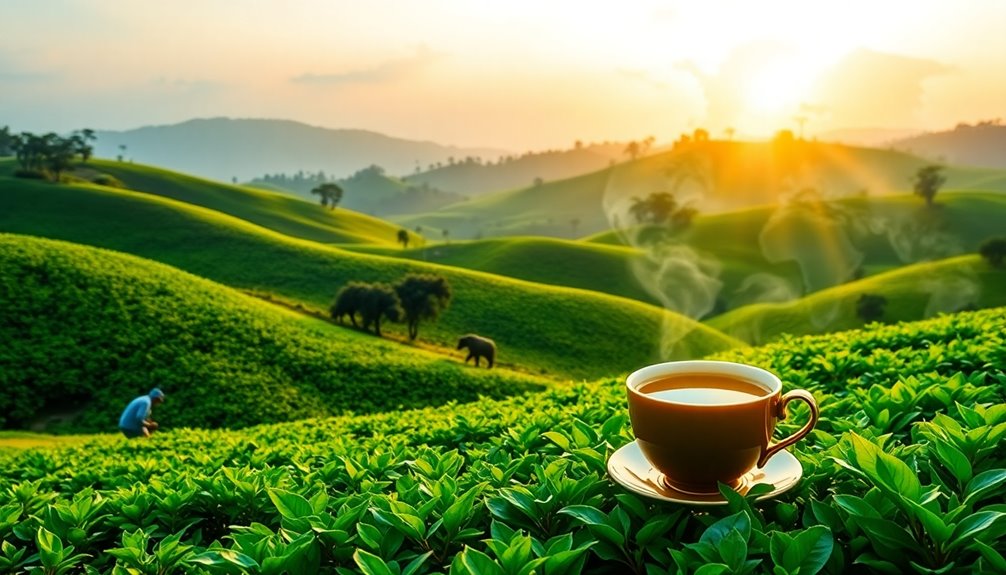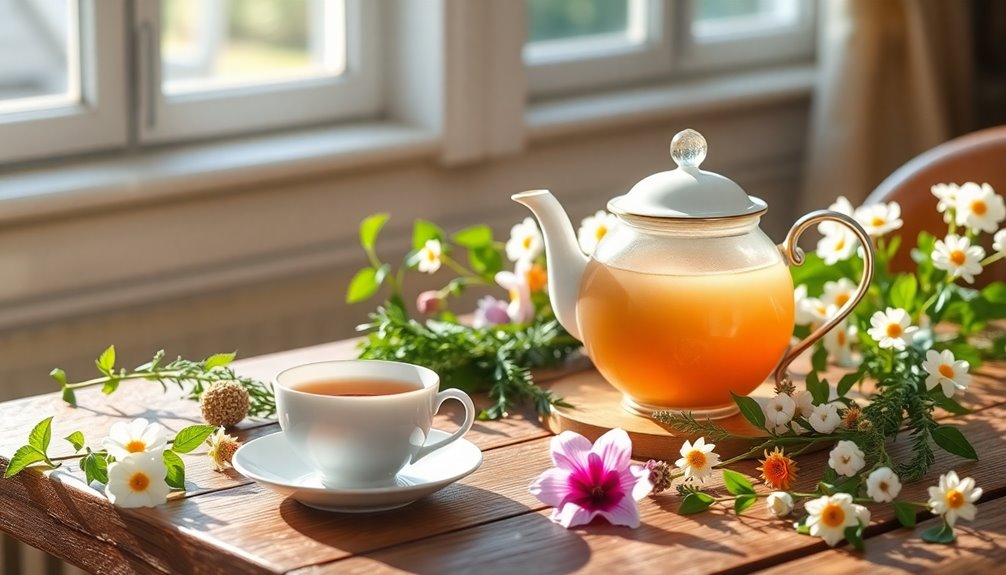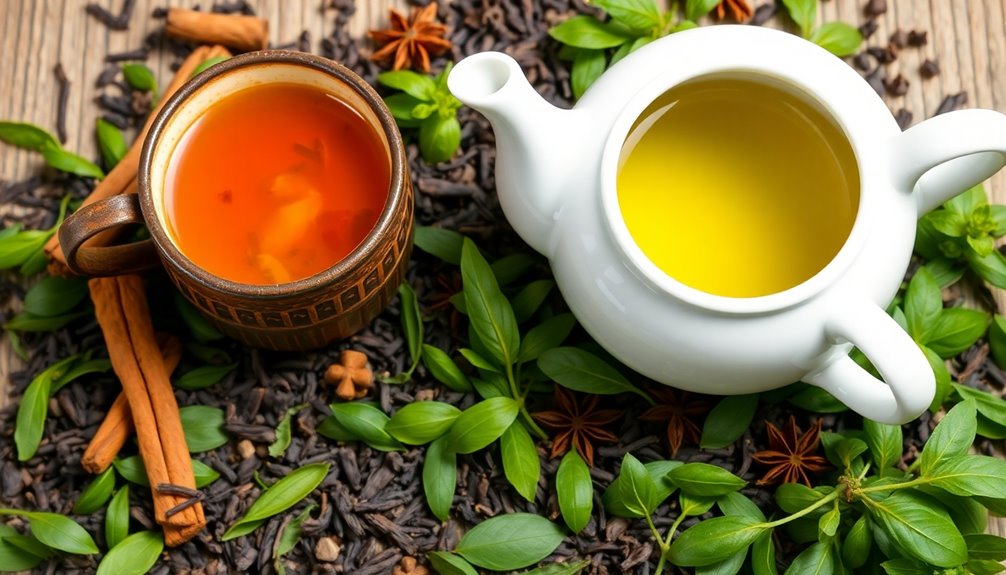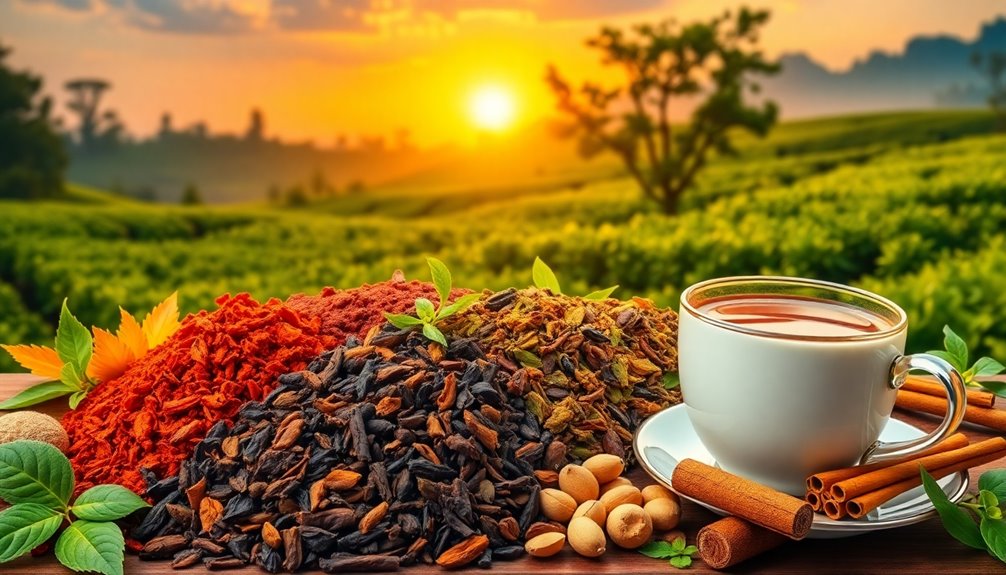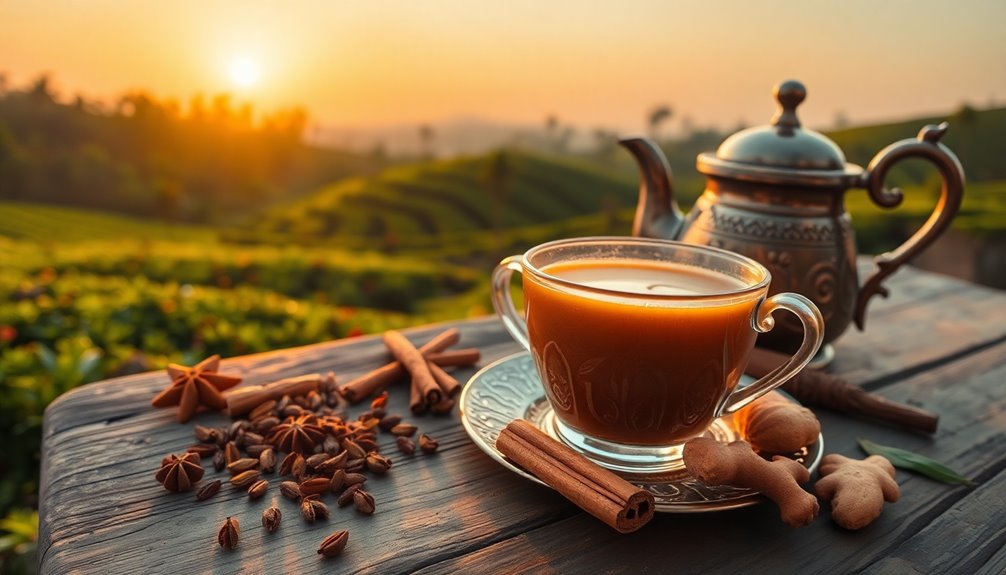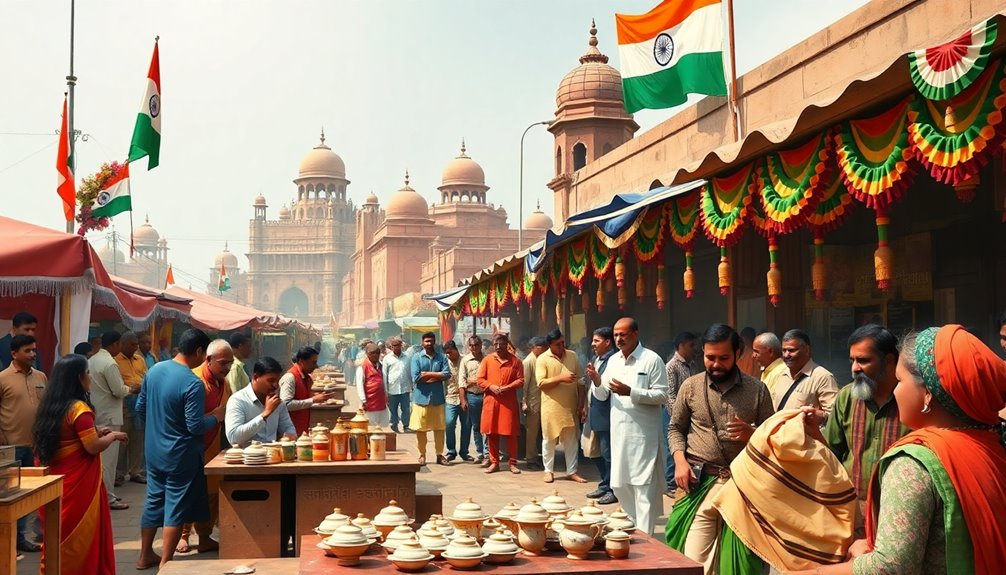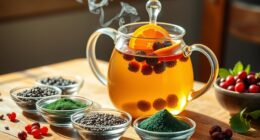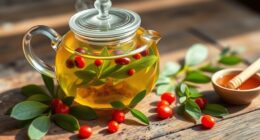Assam and Darjeeling tea have taken the world by storm, and here's how! They're loved for their unique tastes—Assam tea is bold and malty, while Darjeeling is light, often called the "Champagne of Teas." These tasty brews come from India, where they're grown with care in special climates. Not only do they warm hearts during family gatherings and festivals, but they've also become stars in tea markets worldwide. With their rich history and cultural significance, these teas connect people. Curious to know more about their journey and challenges? There's plenty of exciting stuff waiting for you!
Key Takeaways
- Assam tea's bold, malty flavor became a staple in breakfast blends, gaining popularity in the UK, Europe, and North America.
- Darjeeling tea's unique muscatel notes earned it the nickname "Champagne of Teas," making it a sought-after luxury item globally.
- Both Assam and Darjeeling teas hold Geographical Indication status, ensuring quality protection and enhancing their global market reputation.
- Assam's large production volume and organic certification align with rising consumer preferences for authentic and environmentally friendly products.
- Cultural significance and historical ties of tea in India fostered a global appreciation, linking diverse communities through shared tea rituals.
Introduction
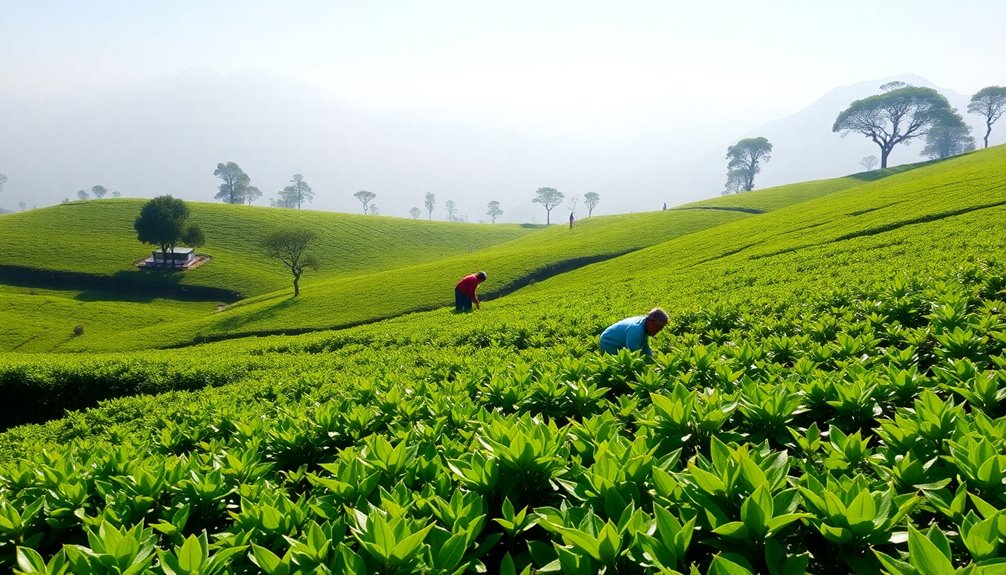
Assam and Darjeeling teas captivate tea enthusiasts around the world with their unique flavors and aromas. These special teas come from the lush tea plantations in India, where the magic of tea-making begins.
Assam tea is famous for its bold, malty taste. It's like a warm hug in your cup! On the other hand, Darjeeling tea is often called the "Champagne of Teas," thanks to its delicate aroma and sweet, muscatel notes.
Both Assam and Darjeeling have earned Geographical Indication (GI) status, which means their quality is protected and celebrated worldwide. This makes them extra special in the tea market!
Did you know that Assam produces around 600 million kilograms of tea each year? That's a whole lot of tea! In contrast, Darjeeling only produces about 10 million kilograms annually, making it a rare treat.
Whether you're sipping a robust Assam with breakfast or enjoying a fragrant cup of Darjeeling in the afternoon, these teas bring joy to every occasion.
Tea Cultivation in India
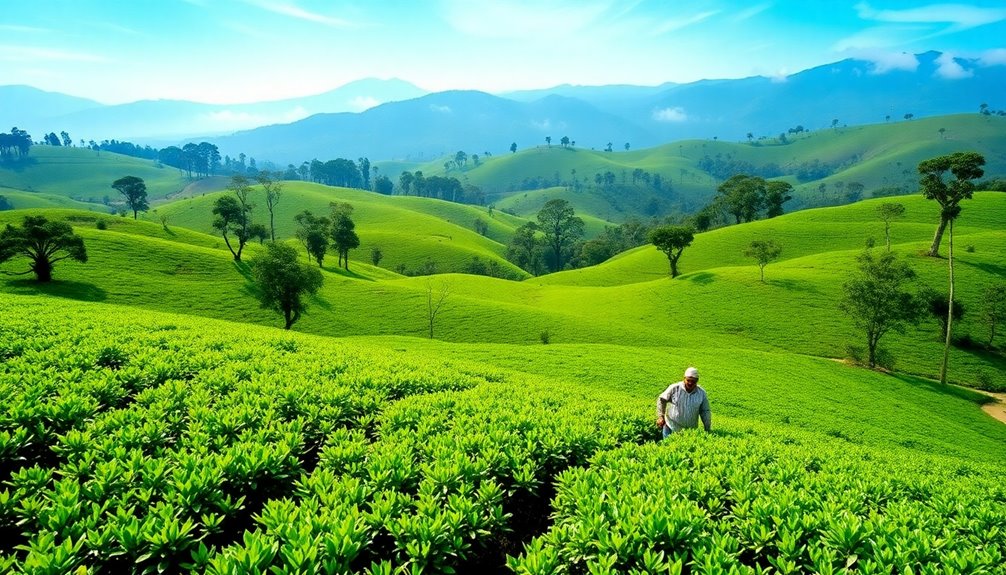
- Darjeeling Tea Gardens: Established in 1841, these gardens thrive in the cool Himalayan foothills, creating high-quality tea.
- Assam: This region produces about 52% of India's total tea production. The humid climate is perfect for the Camellia sinensis var. assamica plant.
- Tea Farmers: Local communities and migrants work hard to cultivate these teas, ensuring quality and flavor are top-notch.
Together, Assam and Darjeeling play vital roles in the Indian tea industry, breaking China's tea monopoly in the 19th century.
With their unique qualities and flavors, they continue to delight tea lovers around the world, making every cup a celebration of India's rich tea heritage!
Global Demand for Assam Tea
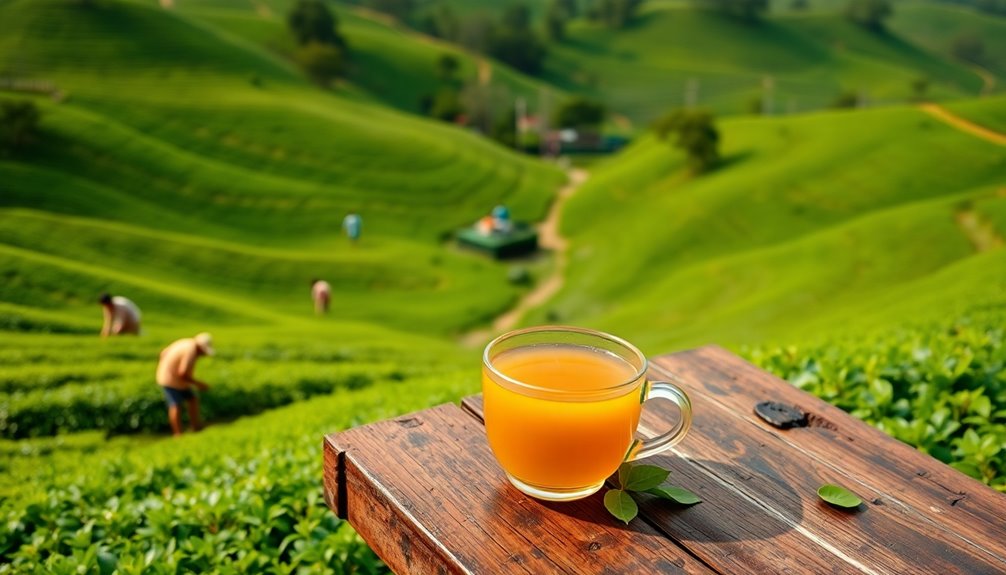
Renowned for its bold and malty flavor, Assam tea has carved out a significant niche in the global market, appealing to tea enthusiasts everywhere.
With around 1,200 million kg produced each year, Assam tea accounts for nearly 55% of India's total tea production, making it a heavyweight in the tea world.
Here's why Assam tea is so special:
- High Demand: It's a favorite for breakfast blends like English and Irish Breakfast teas, especially in the UK, Europe, and North America.
- Quality of the Tea: The unique climate of Assam, with its rich alluvial soil and monsoon rains, creates tea that's bursting with authentic flavors.
- Tea Exports: Increased exports have boosted Assam tea's popularity, particularly in the specialty tea market.
- Certified Organic: Many tea estates are now certified organic, appealing to tea drinkers who care about the environment.
In the beautiful state of Bengal, tea growing has become a sustainable practice, meeting the needs of modern consumers.
Cultural Significance in Rituals
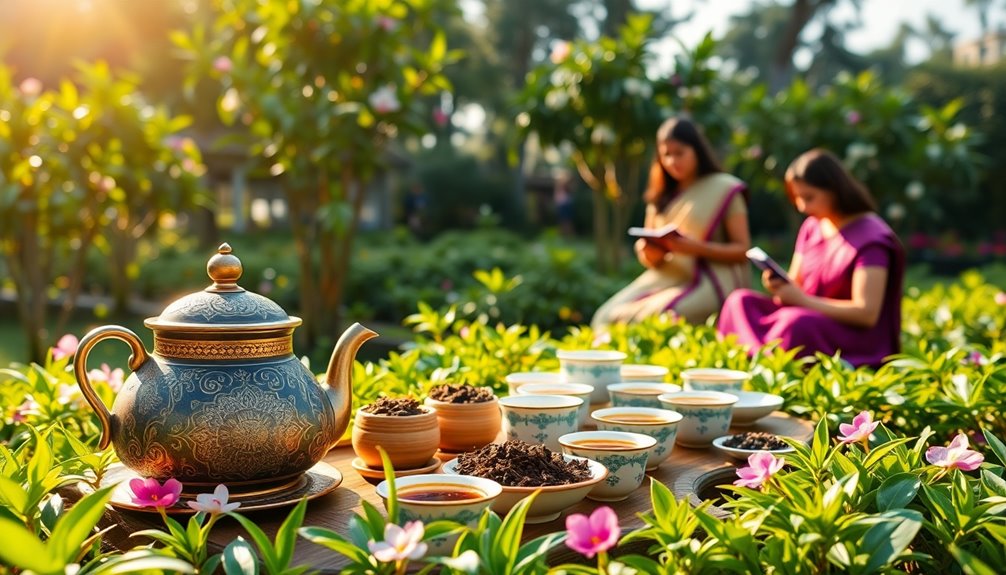
Tea holds a special place in the cultural fabric of India, particularly in Assam and Darjeeling, where it's woven into various rituals and traditions.
You'll find that tea is more than just a drink; it symbolizes warmth and community. In many Indian households, preparing and serving tea, especially Assam and Darjeeling, happens daily. This simple act strengthens family bonds and sparks social interactions.
During religious ceremonies and festivals, tea is a must-have! It's often served to guests as a gesture of respect and hospitality, especially in the Darjeeling region, famous for its high-quality teas.
The ritual of chai-making in Assam brings a delightful blend of spices and milk, showcasing local flavors.
Tea became an essential part of British afternoon tea rituals, showing how its cultural significance spread far and wide, even to Europe.
While enjoying a cup of Assam or Darjeeling, you're not just sipping tea; you're partaking in a rich history of Colonial Tea that connects people across the globe.
Labor Disputes in Tea Estates
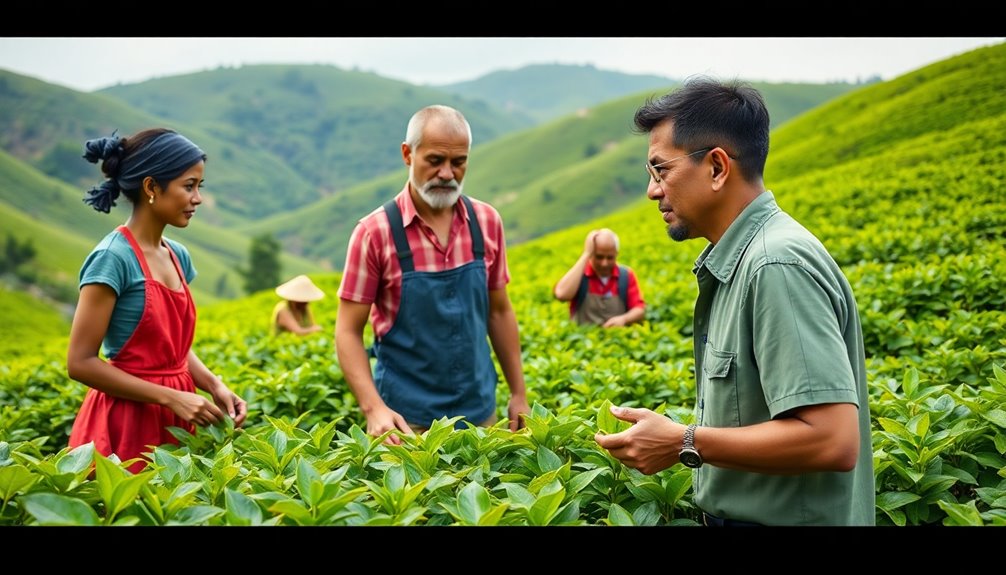
Labor disputes in tea estates, especially in Darjeeling, stem from deep-rooted issues like inadequate wages and poor working conditions. Many tea workers, often from marginalized Nepali communities, face tough realities every day. They fight for fair pay and better living conditions, and their voices matter!
- Poor Wages: Workers often earn very little, making it hard for families to thrive.
- Working Conditions: Long hours in harsh environments take a toll on health and well-being.
- Gorkhaland Movement: This movement, seeking rights for the Nepali-speaking community, highlights the economic disparities workers face in the tea industry.
Strikes and protests have shaken the tea estates, as workers unite for their rights. In 2017, changes in school language policies sparked more tensions, making workers feel their identity was under threat.
The reliance on monoculture in tea production adds to the struggles, causing soil issues and making workers vulnerable to economic shifts.
In this vibrant tapestry of tea production, it's essential to support fair practices, helping workers to enjoy better lives while we all savor that delightful cup of Darjeeling tea! Together, we can make a difference!
Practical Applications
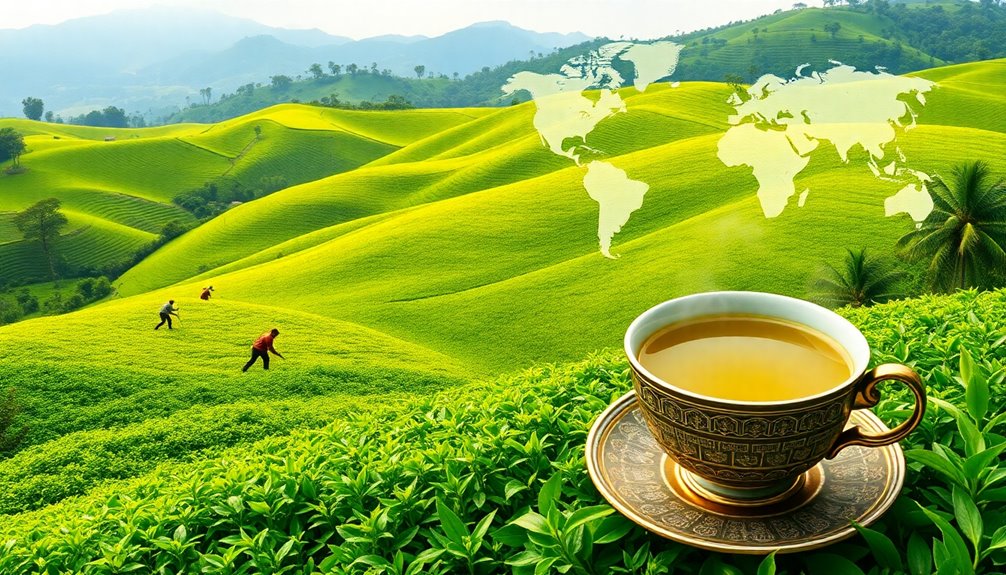
The potential of Assam and Darjeeling teas extends beyond their rich flavors; it has practical applications that can significantly benefit both producers and consumers.
First, these teas are celebrated for their unique tastes and high quality. Darjeeling tea, known as the "Champagne of Teas," enjoys special protection under Geographical Indication (GI) status, which helps maintain its premium reputation.
Here are some practical benefits you might enjoy:
- Organic and Sustainable Practices: Many farms in Darjeeling are adopting organic methods, making their teas more appealing to eco-conscious consumers. You can feel good about every sip!
- Global Markets: Assam and Darjeeling teas are now enjoyed around the world, from Europe to North America. You can find them in shops and cafes everywhere, bringing a taste of India to your home.
- Innovative Processing Techniques: New methods, like low-caffeine Autumnals from Darjeeling and unique Assam blends, cater to different preferences, ensuring there's something for everyone.
Frequently Asked Questions
How Did Darjeeling Tea Become a Global Brand?
Darjeeling tea became a global brand through its unique flavor, the GI status ensuring quality, and innovative marketing that emphasizes sustainability. You'll appreciate its artisanal roots and the growing popularity of specialty teas worldwide.
What Is the Significance of Darjeeling Tea?
Darjeeling tea's significance lies in its unique flavor, cultural heritage, and economic impact. You're enjoying not just a beverage but a symbol of sustainability, craftsmanship, and a vital livelihood for thousands in West Bengal.
Which Tea Is Stronger, Darjeeling or Assam?
If you're looking for strength, Assam tea's your best bet. Its robust, malty flavor and higher caffeine content make it stronger than Darjeeling tea, which offers a more delicate and floral experience. Enjoy accordingly!
Does Assam Has the Largest Concentration of Tea Plantations in the World?
Yes, Assam does have the largest concentration of tea plantations in the world. With over 200,000 hectares dedicated to tea cultivation, it significantly influences both local economies and global tea markets, showcasing its prominence.
Conclusion
In conclusion, Assam and Darjeeling tea have truly won hearts around the world! With their rich flavors and cultural stories, every cup brings joy and warmth to our families. Whether you're sipping tea during a cozy afternoon or sharing it with friends at a celebration, these teas make every moment special. So, let's raise our cups to Assam and Darjeeling, the champions of tea, and enjoy the delightful journey they offer in every sip!

